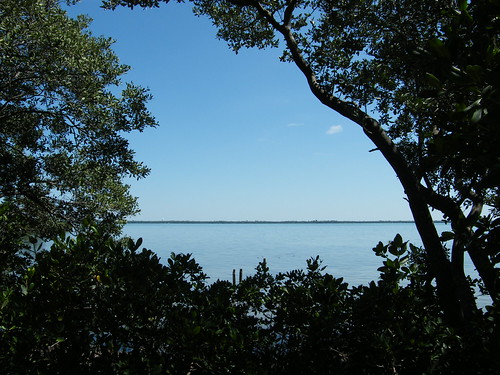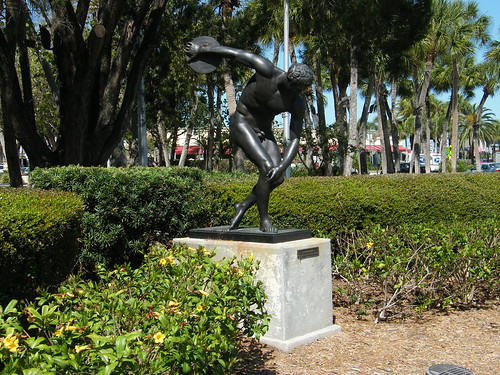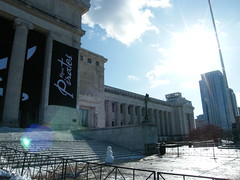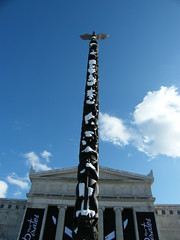After driving north from St. Armands Key, there is a bridge to Longboat Key. Longboat Key also hosts a town by the same name, which is mostly exclusive gated communities. On the Sarasota Bay side of the key is a park called Joan M. Durante Community Park. I stopped in for a walk around and wasn't disappointed!
The views of Sarasota Bay were really nice. There is also a boardwalk that takes visitors through a mangrove forest. I saw lots of horseshoe crab shells and there were hermit crabs scurrying into holes everywhere I looked.



I kept seeing a very interesting looking spider so I took a few pictures of it. When I posted them on Flickr, another member commented and told me that it is a type of crab spider.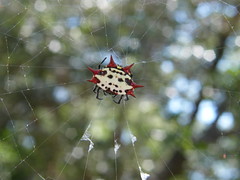
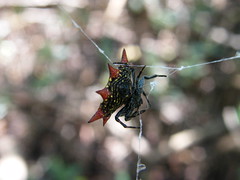
There were a lot of people walking their dogs. The park also offered pick-up bags at the start of the trails to help dog owners clean up after their four-legged friends. The drinking fountain even featured a little doggie-sidecar!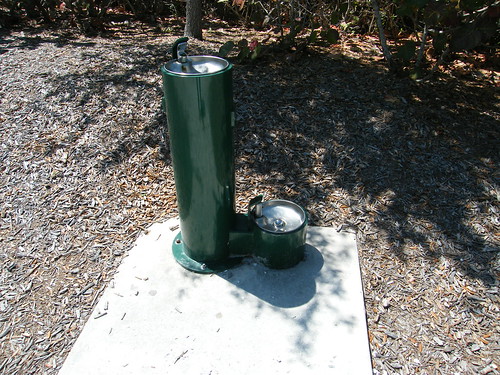
After leaving the park, I went off searching for a beach. I wanted to see the Gulf of Mexico up close!
Tuesday, April 21, 2009
Joan M. Durante Community Park
Tuesday, April 14, 2009
Harding Circle
On my first full day in Bradenton / Sarasota, Florida, I decided to just go poke around the beaches a little to see what interesting things I might find. I didn't really do too much reading about the area before I arrived and just wanted to do some exploration on my own.
After driving around Bradenton a little bit and making the determination that it was similar to any far-out Chicago suburb, I made my way south to Sarasota. The downtown area is quite built up with larger office buildings and hotels. I took the bridge out to St. Armand's Key and found a shopping district called Harding Circle.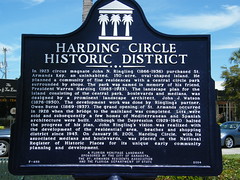
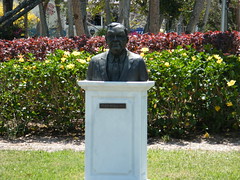
"In 1923 circus magnate John N. Ringling (1866-1936) purchased St. Armands Key, an uninhabited, 150-acre, oval-shaped island. He planned a community of fine residences wit a central circle park surrounded by shops. The park was named in memory of his friend, President Warren Harding (1865-1923). The landscape plan for the island consisting of the central park, boulevards and medians, was designed by a prominent landscape architect, John J. Watson (1876-1950). The development work was done by Ringling's partner, Owen Burns (1869-1937). The grand opening of St. Armands occurred in 1928 when the bridge to the mainland was completed. Lots were sold and subsequently a few homes of Mediterranean and Spanish architecture were built. Although the Depression (1929-1941) halted the progress of his plan, John Ringling's vision was realized with the development of the residential area, beaches and shopping district since 1945. On January 16, 2001, Harding Circle with its associated medians and boulevards, was placed on the National Register of Historic Places for its unique early community planning and development."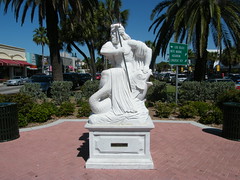
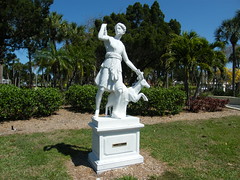
Toward the east side of the circle is a small sculpture garden collectively called Allegory of Sarasota, Its Seven Virtues. I took pictures of the statues and the sign, which says:
John Ringling foresaw Sarasota as a "metropolitan city" distinguished by its cultural facilities. Having built Ca d'Zan on his 66-acre estate on Sarasota Bay, events were set in motion that would fulfill Ringling's vision. This complex, now affiliated with the Florida State University, also boasts theaters, a circus museum, and research facilities. Over time, the Sarasota Concert Band (successor to the Czecho-Slovakian National Band brought to Sarasota by Ringling in 1925), Ringling College of Art and Design (co-founded by Ringling in 1931), Florida West Coast Symphony (1949), Mote Marine Laboratory (1955), New College (1960), Van Wezel Performing Arts Hall (1968), Selby Gardens (1975), and others too numerous to mention were added, fulfilling Ringling's observation: "Though Life is Short, Art is Long".
Allegory of Sarasota, Its Seven Virtues, copyright 2007, conceived and designed by Edward Pinto, was dedicated on February 2, 2008, to John Ringling and countless others who created the cultural jewel of Florida. MUSIC - representing the performing arts;
MUSIC - representing the performing arts; FLORA* - representing our natural beauty;
FLORA* - representing our natural beauty; ARISTOTLE - representing our educational and research facilities;
ARISTOTLE - representing our educational and research facilities; SCULPTURE* - representing our painting and sculpture;
SCULPTURE* - representing our painting and sculpture; ASCLEPIUS, god of medicine - representing medicine's gifts;
ASCLEPIUS, god of medicine - representing medicine's gifts; BOUNTY - representing the bounty of land and sea; and
BOUNTY - representing the bounty of land and sea; and AMPHRITRITE, wife of Neptune, - representing our gulf and bays.
AMPHRITRITE, wife of Neptune, - representing our gulf and bays.
* denotes replica of statue in the Ringling Museum collection
I walked around and snapped some pictures of the statues and green spaces and then got back in the car to look for some views of the mainland and the gulf.

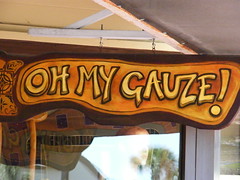
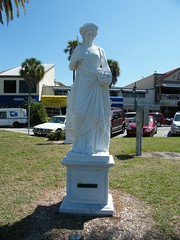
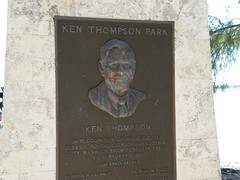
Monday, April 13, 2009
Preparing for Takeoff Again
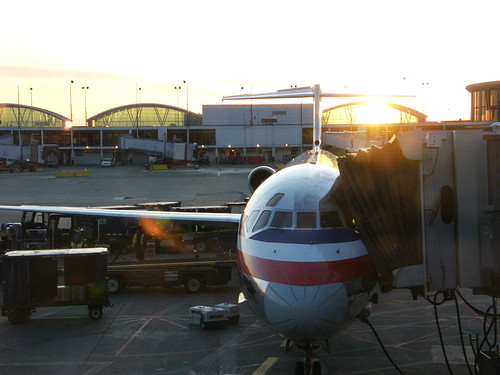
Preparing for takeoff, originally uploaded by zuctronic
Another trip away from the hustle and bustle of the Windy City! On April 7th, I flew out of Chicago's O'Hare International Airport to Tampa International Airport. The flight was about 2 hours and 15 minutes and after landing I made my way to the Budget Rental car desk to pick up my reservation. It was a red Toyota Yaris with a GPS unit to help me get around the unfamiliar territory. The drive from Tampa to Bradenton was about an hour.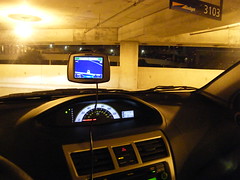
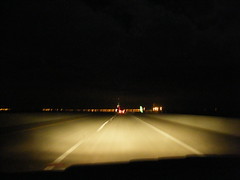
On the way to Bradenton I stopped at a convenience store for some beer, chips, and salsa. I asked if I could buy beer there, thinking maybe they stopped selling after 9pm (it was midnight) and the clerk said, "you can if you've got ID and money!"
I woke up early the next morning with a pounding headache that I sometimes get after flying. I ran to CVS and picked up some advil and was feeling alright by 9am. I had all day Wednesday free, so I decided to venture out and see what the Sarasota area had to offer.
Sunday, April 12, 2009
Kevin and Kristin Grace
I've known Kevin since he moved to Chicago and have watched him go through some tough times and some good times. Broken bones, lost jobs, barbecues, and road trips... Kristin has been devoted to him through it and I've become more enlightened through witnessing their connection.
Many question the value of marriage. When a couple lives together in a relationship for some time, the notion of declaring their everlasting love can seem like an afterthought. But on April 9th, my friend Kevin and his fairer half Kristin stood up in front of their friends, their family, and anyone wanting to see and said they do. They do love each other, they are committed to each other, and they will be forever. For a few moments, the universe paused for these two great people in my life. For a few minutes...
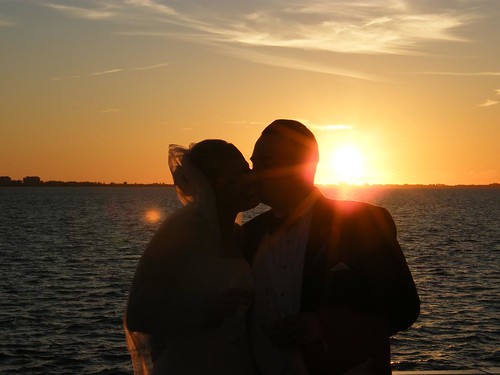
*the universe stood still and everything was perfect*
(Click the photo above to see all the wedding pictures that I took)
Congratulations Kevin and Kristin, I'm more happy for you than I can show!
- Andy
Sunday, April 5, 2009
A Day at the Adler Planetarium
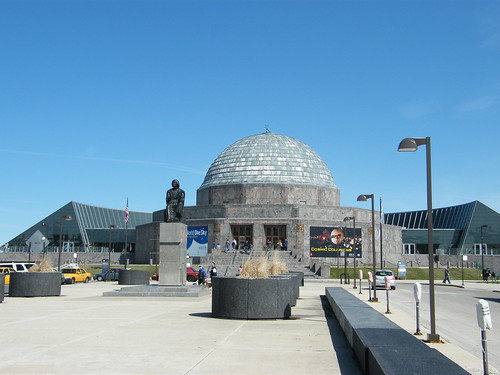
The outside of the old building is adorned with brass plates representing the 12 astrological zodiac symbols. The back of the museum has had a very tasteful addition which hosts a larger museum and solarium.




The Atwood Sphere is actually Chicago's oldest planetarium. It was sold to the Navy and then bought back by the Adler planetarium in the 90s. The phere is a 15ft (5 m) diameter sheet metal sphere with 692 holes in the surface, allowing light to enter to show positions of the brightest stars relative to an Earth viewing point. The sphere slowly rotates around the viewer putting the stars in motion.
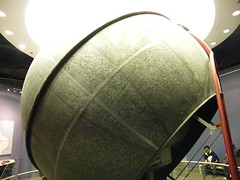
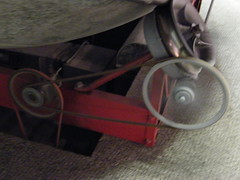
In the basement of the planetarium is more exhibit space where many ancient astonomy tools are on display. There were far more than I could photograph, but here are some of the more interesting ones.




I took this picture of the projector inside the planetarium even though I technically wasn't supposed to take photos in there, I think they mean just while the show was going.

Behind the planetarium is a small observatory with a telescope to enable Chicagoans to see the night sky at over 5000x. The observatory is only open to the public on Fridays and during special events like eclipses, but they use it for research regularly.
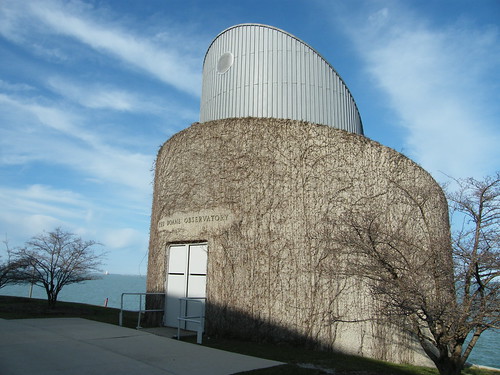
There are some pictures taken from the observatory at this page:
http://www.adlerplanetarium.org/exhibits/doane.shtml
Friday, April 3, 2009
Stanley Field Hall and Sue the T. Rex
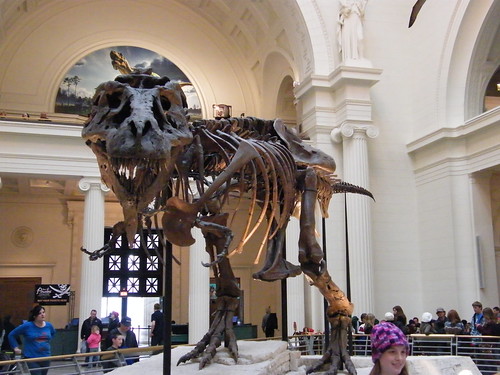
Sue is the most complete and best preserved Tyrannosaurus Rex skeleton so far. It's 67 million years old, 13 m long, and 4 m high at the hips. It's named after the paleontologist who found it, Sue Hendrickson. Based on rings in the bones similar to tree rings, they have estimated this dinosaur to be about 29 years old when it died.




Statues are looking down over the floor from the four corners of the enormous central exhibit hall.
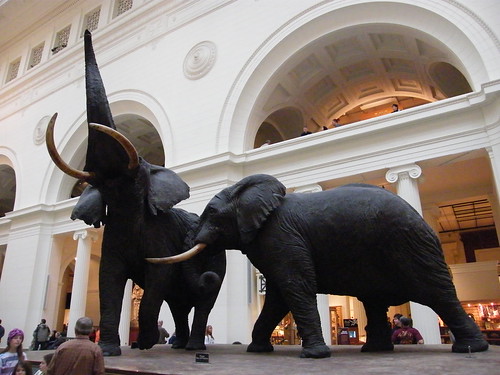
Two African elephants are frozen in battle at the center of the hall.

At the end of the hall is this artist's rendition of how Sue may have appeared in life, 67 million years ago.
Wednesday, April 1, 2009
Field Museum of Natural History
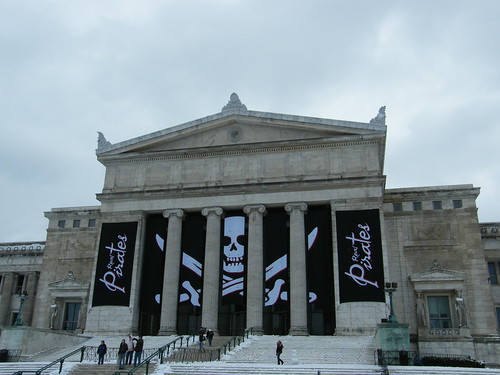
On Sunday I went to the Field Museum of Natural History in Chicago. I took over 400 pictures of the inside of the museum, but I want to start with pictures of the outside so you can see how big it is. This is just one of three such museums devoted to the natural sciences that sit on Chicago's 57-acre lakefront Museum Campus. The other two are the Adler Planetarium and the Shedd Aquarium. These are all named after famous Chicago millionaires of the early 20th century who donated generously to the city so we can now enjoy this egghead crap. The Field Museum is in fact named for its first benefactor, Marshall Field... then President of Marshall Fields, the offspring of Potter Palmer's dry goods store (now Macy's *FUMES WITH RAGE*)
These three institutions are regarded as among the finest of their kind in the world and together attract more visits annually than any comparable site in Chicago. In 2006, the Field Museum was the number one cultural attraction in Chicago but surrendered the title in 2007 to the Shedd Aquarium. You get the idea... this is a popular place for Chicago and the world.
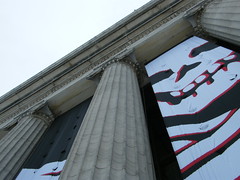
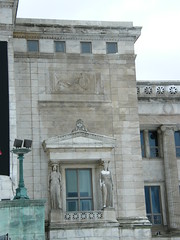
The museum was founded in 1893 for the World's Columbian Exposition AKA the 1893 Chicago World's Fair. It was housed in the Palace of Fine Arts until 1921 when it was moved to its present location. The original building in Hyde Park, several miles to the south, now houses Chicago's famous Museum of Science and Industry.
I'll get photos of the inside of the museum and some of the exhibit halls in future blog articles.

